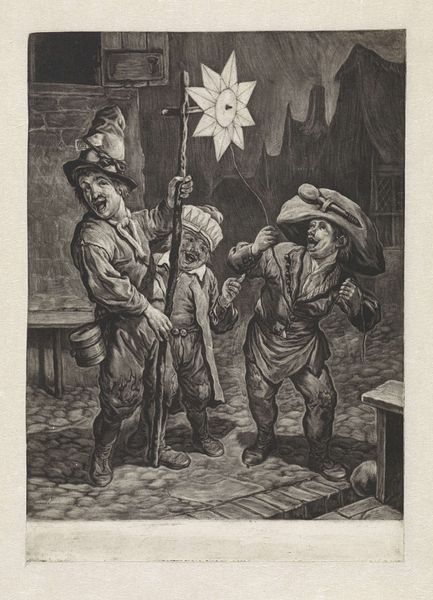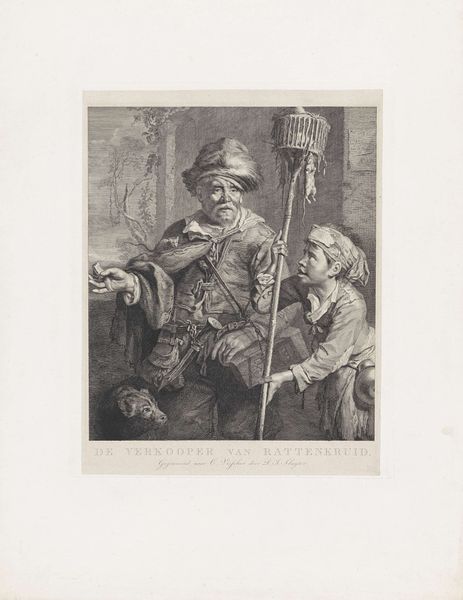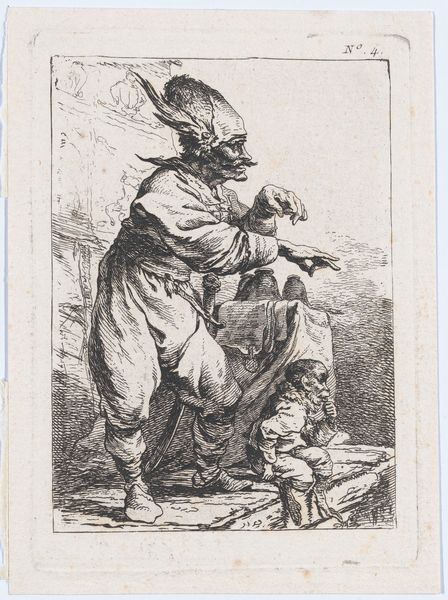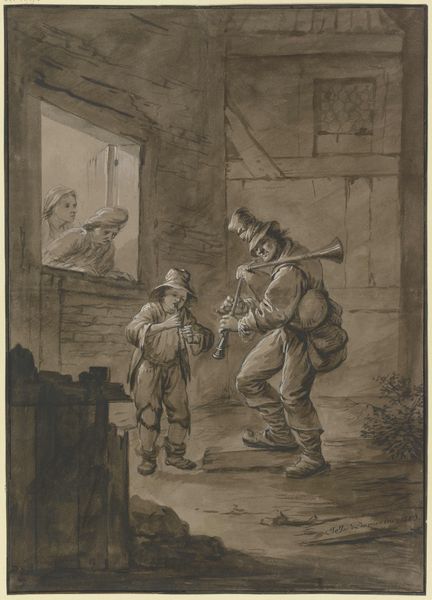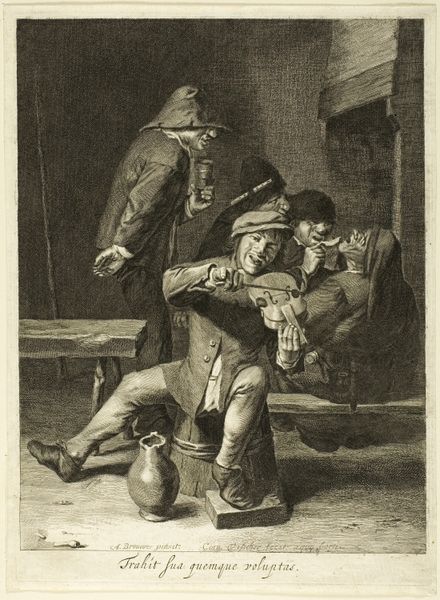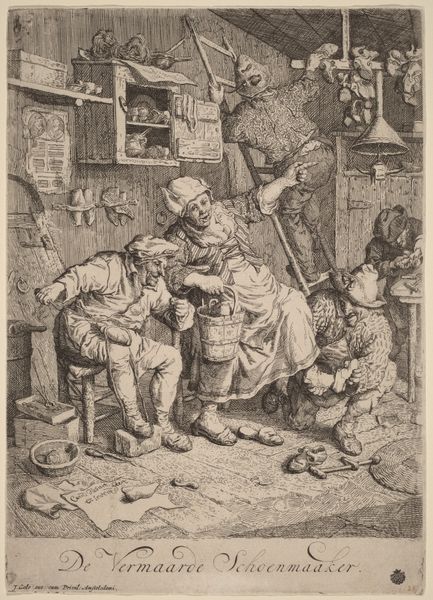
print, engraving
#
portrait
#
baroque
#
dutch-golden-age
# print
#
genre-painting
#
engraving
Copyright: National Gallery of Art: CC0 1.0
This print, "The Seller of Rat Poison," was made in the mid-17th century by Cornelis Visscher. It's an engraving, meaning the image was incised into a metal plate, likely copper, with a tool called a burin. Ink was then applied to the plate and wiped away, leaving it only in the incised lines. The plate was then pressed onto paper, creating the print. The linear quality of the print depends entirely on the artist's skilled hand. Look closely, and you'll see the lines vary in thickness and direction, creating areas of light and shadow. This is a world away from the kind of seamless tonal gradations we associate with painting. The choice of engraving as a medium has social significance. It allowed Visscher to create multiple copies of his work, making it more accessible to a wider audience, rather than unique high art. The image itself, depicting a traveling salesman of pest control and his assistant, speaks to the realities of labor and commerce in the early modern period. It's a fascinating intersection of material, process, and social context.
Comments
No comments
Be the first to comment and join the conversation on the ultimate creative platform.


